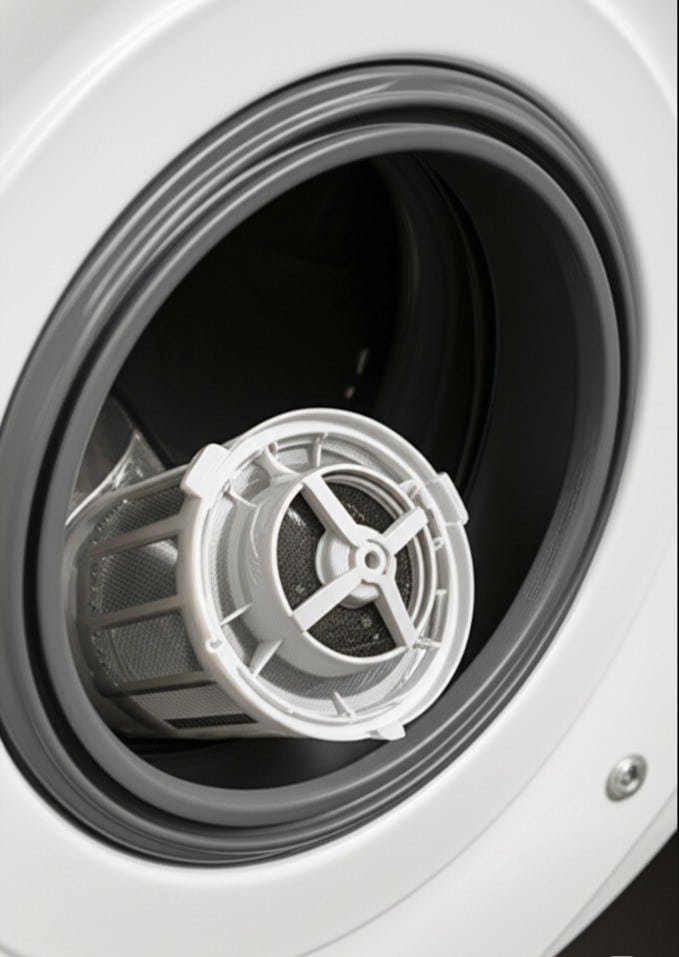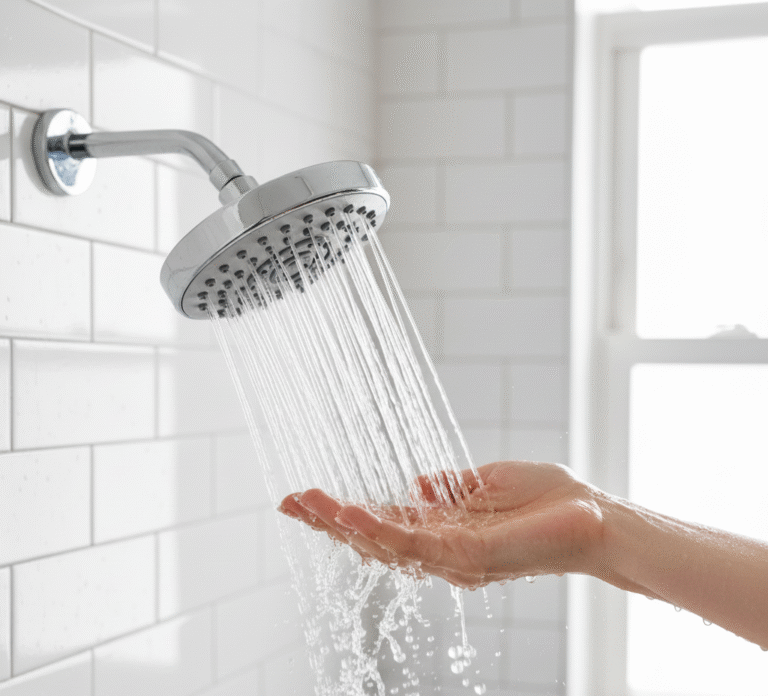Before beginning the cleaning process for your washing machine, it’s wise to gather all necessary supplies. Typically, this includes white distilled vinegar, baking soda, a few microfiber cloths, and an old toothbrush or a small scrub brush. For particularly stubborn mold or mildew, especially within the rubber gasket of a front-loading unit, you might consider using bleach; however, it’s crucial to use bleach with caution, ensure good ventilation, and never mix it with vinegar. As an alternative, specialized cleaning tablets designed for laundry appliances are widely available. Crucially, ensure the appliance is completely empty of any garments before you start. This preparatory step is fundamental for an effective cleaning session. It’s also highly recommended to consult the owner’s manual for your specific model, as it may contain cleaning guidelines pertinent to your particular washing machine.
1. Washing Machine Inner Drum
To thoroughly clean the interior drum of your laundry appliance, several effective methods can be employed, suitable for both top-loading and front-loading configurations. For a natural approach, white vinegar and baking soda are excellent. If you have a top-loading washing machine, begin by filling the drum with hot water. Add approximately four cups of white distilled vinegar. Allow the appliance to agitate for a few minutes, then pause the cycle and let the solution sit for at least one hour. This soaking period allows the vinegar to break down soap scum and mineral deposits. After the hour, resume the cycle. Once this cycle finishes, add one cup of baking soda directly into the drum. Run another complete cycle using hot water. The baking soda will help to further clean and neutralize odors.
For a front-loading washing machine, pour two cups of white vinegar into the detergent dispenser drawer. Then, sprinkle about one cup of baking soda directly into the empty drum. Select the hottest water setting and choose the longest cycle, often labeled ‘sanitize’ or ‘tub clean’. Let this cycle run to completion. If dealing with significant mold, bleach might be considered. For either type of appliance, add one cup of liquid chlorine bleach to the bleach dispenser (or directly into the drum for top-loaders after it has filled with hot water). Run a full hot water cycle. It is absolutely critical to run at least one, preferably two, additional full rinse cycles with plain water afterwards to ensure all bleach residue is thoroughly removed from the washing machine. Remember, never combine bleach with vinegar. Commercial cleaning tablets offer a simpler alternative; place one tablet directly into the empty drum and run a hot water cycle or a designated ‘tub clean’ cycle according to product instructions. Regular cleaning of the drum is essential to prevent buildup.

2.Detergent Dispenser
The next component requiring attention is the detergent dispenser drawer. This part of your laundry appliance frequently accumulates residues from detergents and fabric softeners. Over time, this buildup can become gummy, potentially leading to blockages or fostering mold. If the dispenser drawer is removable, carefully take it out. Prepare a soaking solution of hot, soapy water or a solution of equal parts hot water and white vinegar. Submerge the drawer for at least 30 minutes. After soaking, use an old toothbrush to meticulously clean all compartments and crevices. Rinse it thoroughly and dry it completely before reinserting it into the washing machine. If the drawer isn’t removable, clean it in place using a toothbrush or cloth dipped in your chosen solution, scrubbing the interior and the cavity within the appliance. Wipe everything clean. A clean dispenser is vital for effective operation.
For front-loading washing machine models, meticulous cleaning of the rubber door gasket or seal is crucial. This flexible seal traps moisture, lint, and detergent residue, creating an environment for mold and mildew, often causing musty odors. Gently pull back the folds of the rubber gasket. Prepare a cleaning solution of equal parts white vinegar and water. Alternatively, for persistent mold, use a diluted bleach solution (one part bleach to ten parts water – ensure good ventilation). Dip a cloth or sponge into your solution and thoroughly wipe down the entire gasket, paying attention to hidden folds. An old toothbrush can scrub stubborn spots. After cleaning, wipe the gasket with a clean, damp cloth to remove solution residue. Finally, dry the gasket thoroughly with a clean, dry cloth to prevent immediate mold regrowth. While top-loading units don’t have this specific seal, wiping around the lid and drum opening is good practice.

3.Filter
It’s also important to inspect and clean the filter or drain pump access, if your washing machine is equipped with one. Many modern appliances have a filter to catch lint, hair, coins, and other debris. A clogged filter can impair drainage and performance. Consult your owner’s manual to locate this filter, usually behind a small access panel on the lower front of the unit. Before opening, place towels and a shallow pan underneath to catch residual water. Slowly unscrew the filter cap, allowing water to drain. Completely remove the filter. Clean off all accumulated debris. Rinse the filter thoroughly under warm running water. Inspect the filter housing within the appliance for blockages. Securely reinstall the clean filter. Performing this maintenance every few months helps your washing machine operate efficiently.
Don’t forget to wipe down the exterior surfaces of your washing machine. Over time, dust, detergent drips, and lint can accumulate. Use a soft microfiber cloth dampened with a mild, all-purpose cleaner or a warm water and vinegar solution. Avoid abrasive cleaners or harsh solvents that could scratch or damage the finish, especially on painted surfaces or control panels. Gently clean the top, front, and sides. Pay attention to the control panel, buttons, and dials. Promptly wipe up spills to prevent them from drying or damaging the surface. A clean exterior contributes to a well-maintained appliance and a neater laundry area.
After cleaning the internal components, run a final rinse cycle. This should be an empty cycle using hot water or a normal warm water setting. The purpose is to flush out any remaining cleaning agents—vinegar, baking soda, bleach, or commercial cleaner—and any loosened debris still inside the drum or hoses. This ensures no cleaning product residues transfer to your next load of laundry, leaving your washing machine fully refreshed and ready for use.

4.Rinse Cycle
To help maintain the appliance’s freshness after cleaning, and after every regular use, promoting good airflow is key. For front-loading models, leave the door slightly ajar after removing laundry. If the detergent dispenser drawer is accessible, pulling it out slightly also helps. This allows air to circulate inside the drum and around the gasket, helping moisture evaporate and reducing mold and mildew growth, primary causes of musty odors in these types of washing machine. For top-loading units, leaving the lid open for an hour or so after use can also be beneficial. If leaving the door or lid open isn’t practical due to children or pets, at least wipe the interior of the door and gasket (for front-loaders) dry with a clean towel after each wash. Consistent attention to airflow and moisture reduction will prolong cleanliness. Using the correct amount of High-Efficiency (HE) detergent for HE appliances is also critical, as too much detergent can lead to excessive suds and residue buildup in your washing machine.

Maintaining a clean washing machine is essential for fresh laundry and for extending its operational lifespan. By regularly following these detailed steps, you can keep your appliance performing optimally and prevent common issues like odors and residue transfer. A clean washing machine leads to cleaner clothes.
A well-cleaned washing machine is the first step to truly clean clothes and helps maintain the longevity of your appliance. Keeping your washing machine in top condition ensures that it runs efficiently. For a completely clean home, consider the services of Toronto Shine Cleaning. We offer comprehensive cleaning to ensure that your entire Toronto home is impeccably maintained and inviting.



















